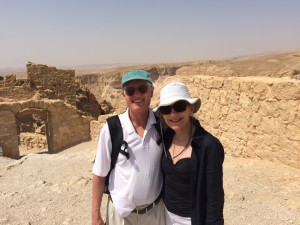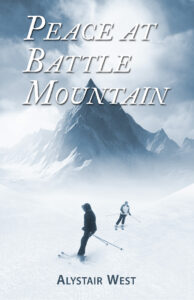 I am just over halfway through a series of blogs on leadership. In order to write this series in coordination with a teaching obligation that Kathy and I have undertaken, I’ve had to pause a series of blogs on spiritual warfare and the theology of the Methodist theologian Walter Wink. I intend to return to Wink sometime in May and continue until I have completed my review of his work. His work is relevant to more than one project I’m currently working on.
I am just over halfway through a series of blogs on leadership. In order to write this series in coordination with a teaching obligation that Kathy and I have undertaken, I’ve had to pause a series of blogs on spiritual warfare and the theology of the Methodist theologian Walter Wink. I intend to return to Wink sometime in May and continue until I have completed my review of his work. His work is relevant to more than one project I’m currently working on.
As my friends know, I’ve written a series of books on theology, leadership, and philosophy and two novels, Marshland and Peace at Battle Mountain. I’m currently a bit more than halfway through the last installment of what I call the Arthur Stone novels. I began these novels hoping to communicate something of the mystery of Christian faith to a broader audience than Christian believers. The novels follow the career of a young lawyer, Arthur Stone, and his wife, Gwynn, from near the beginning of his career in the 1980s until around 2015.
Each of these novels features a murder, an economic crime, a financial collapse, and the ensuing litigation that typically arises from such events. However, behind the scenes, there lies the mystical reality of a world beyond our material existence, a world that interacts with and connects to our own in mysterious ways.
The first novel delves into a murder during the Texas savings and loan crisis, exploring faith from a spiritual perspective. The second novel centers on the period surrounding the collapse of Enron, WorldCom, and other companies during the financial crisis around 2000, addressing love from a spiritual perspective. The final book, set in 2013, discusses the aftermath of the great financial collapse of 2008, focusing on hope from a spiritual perspective.
 At the end of Peace at Battle Mountain, one of the characters has a dream:
At the end of Peace at Battle Mountain, one of the characters has a dream:
He remembered his failures and infidelities. He saw all the people he had used and hurt before his injuries—and some since. He remembered his wife’s desertion during his illness. He remembered his inner healing through Eleanor’s love. He remembered their love, and he missed her. He remembered his loneliness and saw the loneliness extending out into the future.
What is the purpose of it? What is the purpose of all this struggle? What is the purpose of all this failure and loss? What is the purpose of it all, even my success? In the end, does it mean nothing? What is the purpose of it all?
The figure in his dream began to speak.
“The purpose is not in history or events. For better or for worse, the meaning is in what humans make of it. Human history and human lives are stages upon which the play of life is set. I have set the stage. It is for you to create its meaning. The stage is not the meaning of the play. The meaning of the play is the life of the characters. Yet, life is not ‘sound and fury, signifying nothing.’ The deepest meaning is the love you share and the meaning it gives. That is the only meaning. The only thing that abides forever is love, for love is what I Am, and no love is ever lost in Me.”
Then, in his dream, Roger saw his life as it was played out in the second half of the 20th century. He saw all of the events of that history. He saw the wars. He saw the death of so many innocent young people in those wars, some for little or no reason at all. He saw the political intrigues and the victory of corruption and decay. In his vision, he saw all the economic booms and busts of his business life, past and future. He saw the end of Winchester & Wells, to which he had given his life. He saw the victory of fools and the defeat of the wise.”
“In his dream, he saw the innocent’s corruption and the unexpected salvation of the corrupt. He saw all the marriages that begin with the fiery anticipation of youth and their end in disillusionment and divorce. He saw all the families starting in hope, ending with hope fulfilled or the end of hope. He saw the endless, impossible-to-understand foolishness and suffering of humanity. He saw in his dream all the seemingly meaningless chaos of history.
Above it all, he saw a figure, bloody from the lash, bruised by beatings, and pierced by nails. He saw that figure looking down upon him in sadness and pain. He felt the vulnerable, suffering love of that figure freely given, sharing itself with the world, and the figure drawing into himself all the pain, all the loss, all the destruction, all the decay, and death of the world from its foundation. He saw the vulnerability and suffering of the One who shared in all life’s meaninglessness and drew it into himself. He saw himself sharing with the sufferer in his suffering.
“Then, in a moment, he saw the figure of his dream transformed into light, a beam of light having the shape of a heart. He saw himself transformed into a version of that light.
Roger Romny awoke. It was morning, the sky was clear, and the day was warm. It was time to go to the office. His dream and its meaning could wait.” [1]
The dream of Roger Romny is meant to communicate the truth of which the Apostle Paul speaks:
If I speak in the tongues of men or of angels, but do not have love, I am only a resounding gong or a clanging cymbal. If I have the gift of prophecy and can fathom all mysteries and all knowledge, and if I have a faith that can move mountains, but do not have love, I am nothing. If I give all I possess to the poor and give over my body to hardship that I may boast, but do not have love, I gain nothing.
Love is patient; love is kind. It does not envy, it does not boast, it is not proud. It does not dishonor others, it is not self-seeking, it is not easily angered, it keeps no record of wrongs. Love does not delight in evil but rejoices with the truth. It always protects, always trusts, always hopes, always perseveres.
Love never fails. But where there are prophecies, they will cease; where there are tongues, they will be stilled; where there is knowledge, it will pass away. For we know in part and we prophesy in part, but when completeness comes, what is in part disappears. When I was a child, I talked like a child, I thought like a child, and I reasoned like a child. When I became a man, I put the ways of childhood behind me. For now, we see only a reflection in a mirror; then, we shall see face to face. Now I know in part; then I shall know fully, even as I am fully known.
And now these three remain: faith, hope, and love. But the greatest of these is love (I Cor. 13).
Kathy and I have recently been reflecting on and attempting to address a challenging situation with wisdom and love. It has reminded me that love is not merely the key to human relations; it is the key to all relationships in which we human beings are involved, including institutional ones. The problem, of course, is determining how to infuse love into our politics, economics, business, non-profits, and similar domains.
Copyright 2024, G. Christopher Scruggs, All Rights Reserved
[1] Peace at Battle Mountain (Hunt, Texas: Quansus, 2024), 328-329
